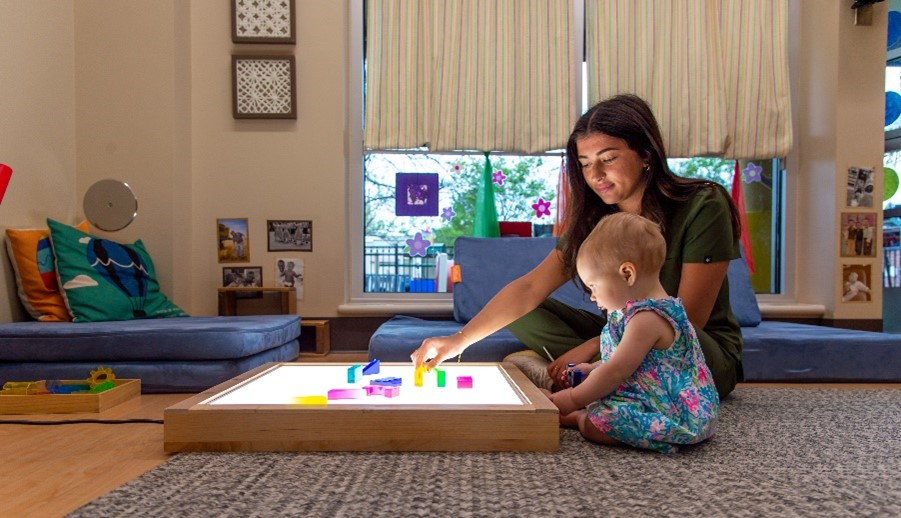
There are no seven wonders of the world in the eyes of a child. There are seven million.”
Walt Streightiff
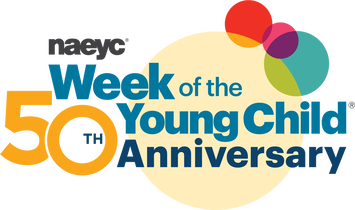
The Week of the Young Child® is an annual celebration sponsored by the National Association for the Education of Young Children (NAEYC), the world’s largest early childhood education association. The purpose of the Week of the Young Child® is to focus public attention on the needs of young children and their families and to recognize the early childhood programs and services that meet those needs.
NAEYC first established the Week of the Young Child® in 1971, recognizing that the early childhood years (birth through age 8) lay the foundation for children’s success in school and later life. The Week of the Young Child™ is a time to plan how we—as citizens of a community, of a state, and of a nation—will better meet the needs of all young children and their families.
MUSIC MONDAY
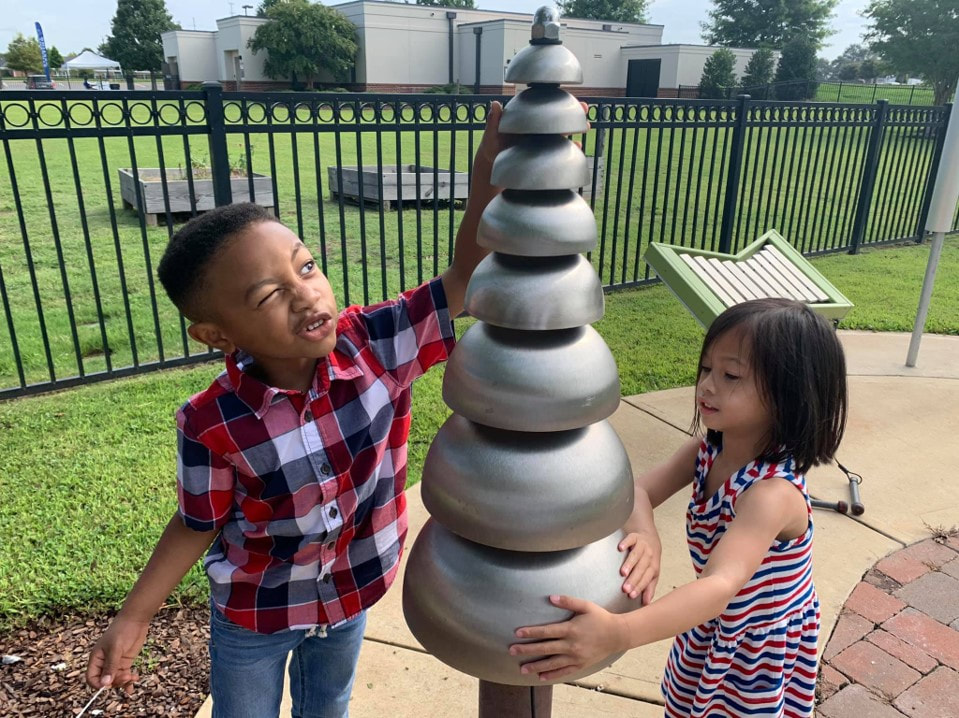
Making music is one of the most intense, multi-sensory, and physically involving activities in which young children engage (Carnegie Hall’s Weill Music Institute).
Music Therapist, Dawn Sandel, explains the benefits of music for children of all ages and abilities. Highlights of music therapy services at the RISE Center (UA) are also featured.
When children sing, dance, play instruments, and listen to music, they develop their language and early literacy skills, motor skills, and cognition. Watch board-certified music therapist, Dawn Sandel sing “Hello” and address early developmental milestones, such as waving hello, responding to name, and body part identification. Instrument play with egg shakers is also presented as Dawn sings “I Know a Chicken” (Laurie Berkner) and encourages simple sign language and tummy time. These songs/concepts can be implemented at home or in the classroom.
TASTY TUESDAY
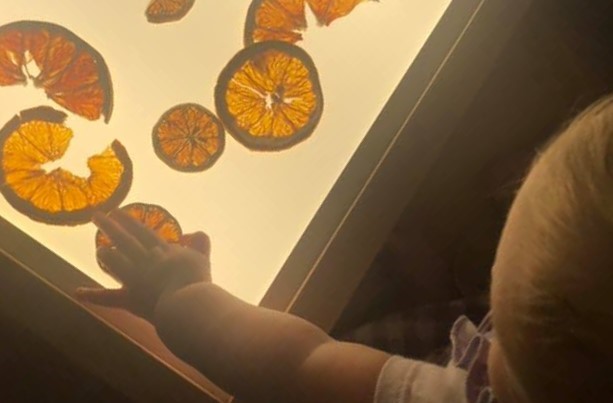
Teaching children about nutrition and physical activity is important (USDA). Cooking together also connects math with literacy skills, science, and more.
In this video for Tasty Tuesday, UA Child Development Specialist Leigh Pate and Nutritionist Julia Sosa discuss barriers that families in the Latino immigrant community face in having access to nutritious and affordable food, and existing services that help to offset the cost of food.
En este video para Martes Sabroso, Leigh Pate, especialista en desarrollo infantil de UA, y Julia Sosa, especialista en nutrición, discuten las barreras que enfrentan las familias de la comunidad inmigrante latina para tener acceso a alimentos nutritivos a precios razonables y servicios que existen para compensar los costos de los alimentos.
Cooking together connects math with literacy skill, science, fine motor skills and more while encouraging healthy nutrition at home and in the classroom. The children in RISE Center’s preschool classroom are connecting literacy and healthy cooking following reading Eric Carle’s, “Pancakes, Pancakes!” Children work on making pancakes by measuring, mixing, and pouring ingredients. They are able to see the transformation of the pancake ingredients. There are many ways to make cooking with toddlers and preschoolers fun and enriching!
WORK TOGETHER WEDNESDAY
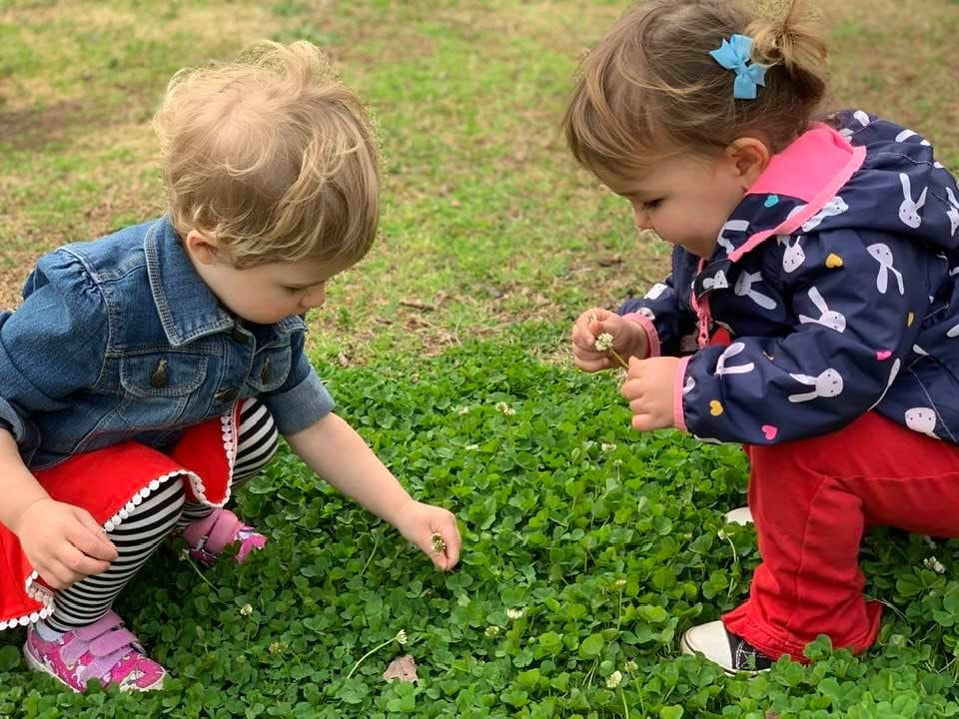
When children build and work together, they explore math and science concepts and develop their social and early literacy skills.
Children often collect small items. One toddler class was frequently collecting sticks and making small piles with them while on the playground. Their teachers encouraged their interest and expanded on this project by taking the children on a nature walk around the school grounds to collect a variety of different types of sticks and leaves. With the items that they had collected the children and teachers worked together to create one very large pile of sticks and leaves that they layered together to make a nature collage
Working with other people takes practice and young toddlers can start practicing their social skills through play. Here are two examples of how young toddlers work together to see-saw and push one another in a wagon.
Two preschool children work together to complete a puzzle using pattern blocks. This particular puzzle can be solved many different ways, and the children often try to find new ways to complete this puzzle. Though this is an activity that can be completed individually, the children seem to find much joy in completing this together!
In this video, preschool children spontaneously lead an exercise class together. One child started this session, then the other children joined in and made it their own. The children in this video worked together as they followed each other’s lead and created new exercise routines.
When children build together they explore math and science concepts and develop their social and early literacy skills through problem solving, communication, cooperation, listening, turn-taking, impulse control and leadership. Children can use any building material as seen in the RISE Center preschool video. While children often learn to work in teams and groups at school, they can also learn these skills at home. Often, children learn skills simply by playing with their peers in an unstructured environment. It is important that children have the opportunity to free play with their friends and siblings.
In the video, children work together to create a story with a peg board and colored pegs. The two children discuss what they want the pegs to represent, and how they want the pegs to be arranged
ARTSY THURSDAY
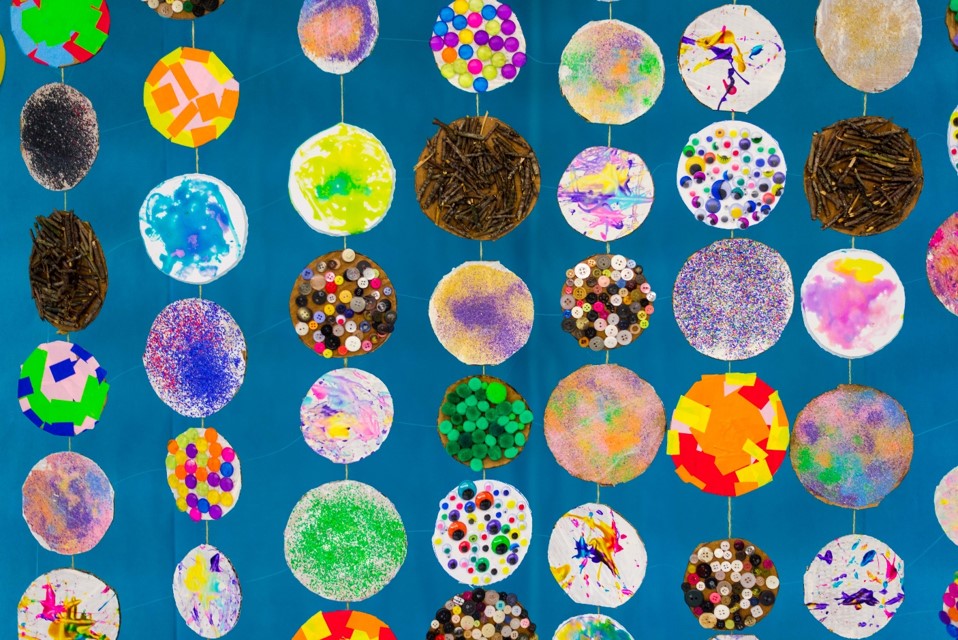
Art experiences give children opportunities for creative expression, multi-sensory learning, and ways to represent their ideas, thoughts, and experiences in various forms.
Children develop creativity, social skills, and fine muscles with open-ended art projects that let them make choices, use their imaginations, and create with their hands. Join Shana Milligan as she discusses some fun ideas for three-dimensional (3D) art activities to do with young children.
There are two very different types of art experiences. In the first, a process art experience, the child has many opportunities to explore the materials, think, express him/herself, and create. The second is a product focused art experience where the child follows directions given to make a predetermined end product. These two types of art experiences don’t support children’s development in the same ways. It’s important to know the difference in order to offer children art experiences that support their creativity, enjoyment of art, thinking skills, and healthy development. In this video, the children of RISE Center’s preschool classroom are able to be creative and explore different materials.
“Pete the Cat” is a very well-known children’s book written by James Dean. The children in RISE Center’s toddler classroom were able to act out the familiar book by walking through paint and water. Walking with slippery, painted feet (with the guidance and assistance of trusted adults) helps children to develop their balance, coordination and core stability, and also encourages them to make connections between their movements and the marks they make.
Messy play like finger painting is important to every child’s development. It helps the body and brain integrate information, such as that needed for later spatial concepts, math and language. Painting is a way for children to do many important things: convey ideas, express emotion, use their senses, explore color, explore process and outcomes, and create aesthetically pleasing works and experiences.
Art exploration is not only fun and entertaining – it’s also educational. The freedom to manipulate different materials in an organic and unstructured way allows for exploration and experimentation. The children in RISE Center’s preschool classroom work on fine motor development – building eye-hand coordination and gross motor skills by using large arm movements and the whole body to stretch and reach. They also work on language development, social development, and cognitive development through art.
Young children learn about the world through their senses. Infant and toddler teachers provide experiences that allow children to learn through multiple senses in one activity. Painting activities with multisensory materials allow infants to learn through sight, touch, and hearing.
RAINBOW STUDY
Infants depend on their caregivers to provide interesting stimulus in their environment. One way caregivers can provide this stimulus is through a colorful mobile that hangs over an infant’s play mat or crib. Mobiles give infants something interesting to gaze at, and colors pique their limited – but developing – eye sight. Infant teachers at the Children’s Program involved the children in their classroom in the making their own mobile by using all the colors of the rainbow and mirrors.
POT PAINTING
Teachers frequently look for behaviors and interests of the child to build an activity around. Other times children are invited to experience an interest of the teacher in an engaging and age-appropriate way. In this way, teachers and children learn from one another. One of the teachers in The UA Children’s Program shared her interest of growing flowers with young toddlers. The featured documentation chronicles the growth of the project as the teacher and children learn alongside one another.
FAMILY FRIDAY
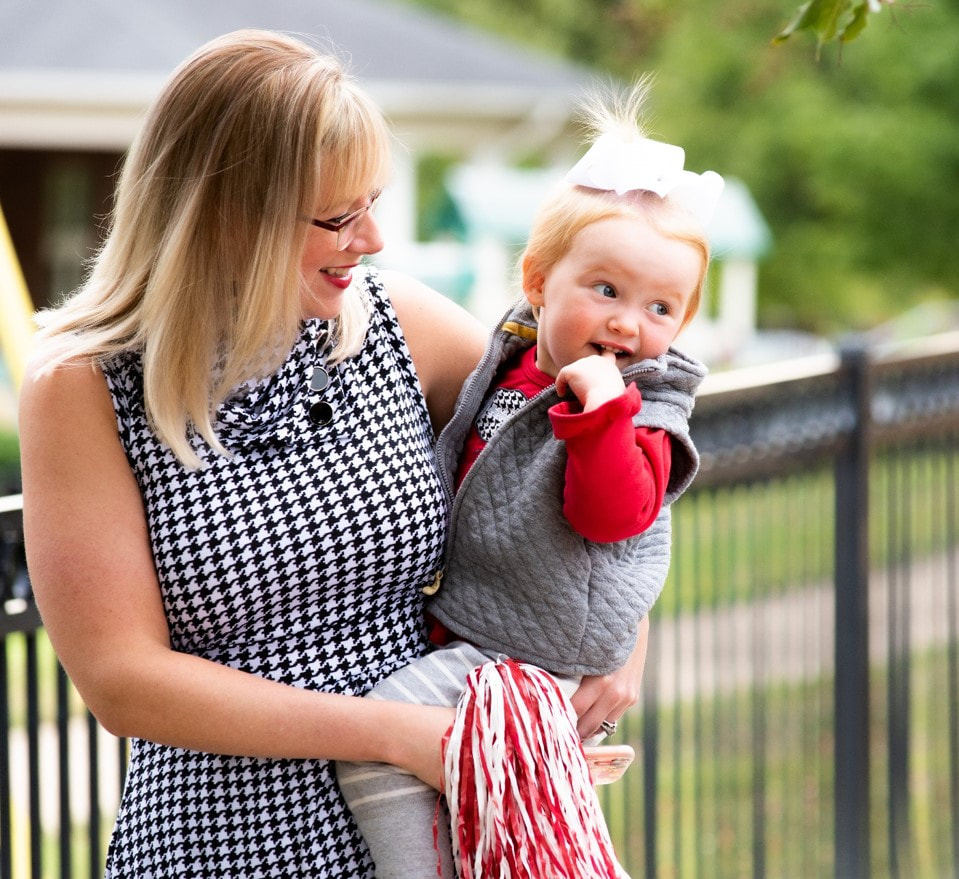
Engaging and celebrating families is at the heart of teaching young children.
The Chinese school in Tuscaloosa serves as a socialization agent and provides social support for local families and friends. Through learning language and culture, our children develop a sense of belonging, enhance their ethnic identity, and form positive characters.
Reading and storytelling with infants and young children promotes brain development and imagination, develops language and emotions, and strengthens relationships. Even during a pandemic, schools and families can work together showing the importance of parent/child interactions by reading to your child’s class as seen in the video from the RISE Center. Reading stories with children has benefits for adults, too. The special time you spend reading together promotes bonding and helps to build your relationship with your child
Engaging and celebrating families is at the heart of supporting our youngest learners. NAEYC applauds family members’ role as young children’s first and most important teachers. Human faces are one of an infant’s favorite and fascinating things to observe. By three months of age, most babies know the difference between familiar faces and strange ones.
Positive relationships between adults and children are essential for the development of children’s sense of personal responsibility and for fostering their capacity for self-regulation, their constructive interactions with others, and their academic function and mastery. One way that The UA Children’s Program includes families’ unique cultural backgrounds into the program is through a special festival, called the annual Holiday Cultural Celebration. Families are also invited to be active participants in each classroom, providing authentic cultural experiences for the children.
Check out these resources for families and caregivers!
Parenting Assistance Line
Alabama Department of Early Childhood Education
Zero to Three: Early Connections Last a Lifetime
Institute for Learning & Brain Sciences: University of Washington
Alabama Family Central
Alabama Partnership for Children
Center on the Developing Child: Harvard University
ABOUT OUR CONTRIBUTORS
Dr. Shan Jiang is an adjunct professor at the Department of Human Development and Family Studies.
Shana Milligan is a Child Development Specialist at Child Development Resources.
Leigh Pate is a Child Development Specialist in the Child Development Resources.
Dawn Sandel is the board-certified music therapist.
Julia Sosa is the Prenatal Outreach and Latino HIV Coordinator for Whatley Health Services, Inc.
WITH SPECIAL THANKS TO OUR PARTNERS IN EARLY LEARNING
The UA Children’s Program
The RISE Center
Child Development Resources
The Department of Human Development and Family Studies (HDFS)
Our Team of Early Childhood Professionals
With special thanks to Dr. Holland Banse, Dr. Cecile Komara, and Mrs. Sara Nance.
With Special Thanks to Our Colleagues
Tabby Brown, CHES Communications Specialist
Craig Graves, CHES Creative Media Manager
Rosemary Klein, CHES Social Media Manager
Steven Lockhart, CHES Web Developer and IT Technical Specialist
Dr. Rachel Thompson, Director of The Center for Instructional Technology
